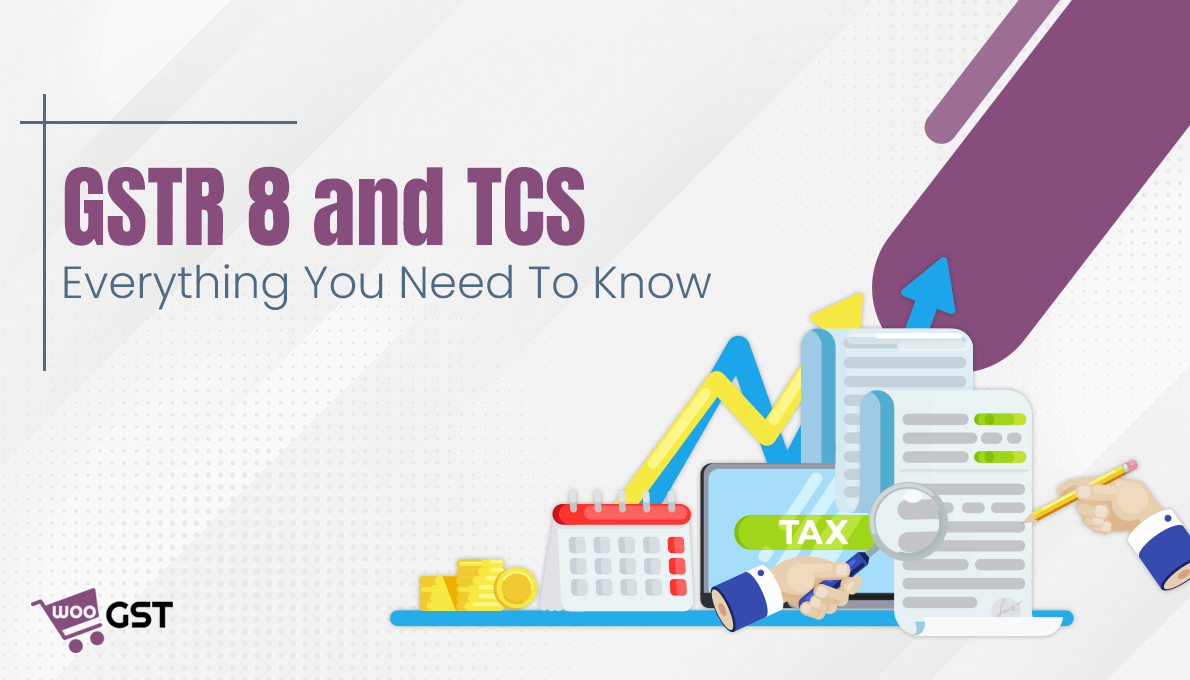
In the realm of taxation in India, the Goods and Service Tax (GST) has been significantly reformed. It streamlined the indirect tax structure and brought about uniformity in the tax structure across the country. Two important aspects of GST are GSTR 8 and Tax Collection at Source (TCS), which play a crucial role in the compliance framework.
GSTR 8 is an annual tax return form for taxpayers who are involved in inter-state transactions.
TCS stands for Tax Collected at Source and is a tax that is collected by businesses from their customers. TCS is charged on certain goods or services and must be paid to the government. All businesses must file GSTR 8 with a turnover of more than Rs. 2 crore in the preceding financial year.
Filing TCS and GSTR8 manually may increase the chance of errors. Therefore, businesses should opt for an automated solution such as a GST accounting plugin to ensure accuracy and compliance. Automated solutions also help businesses save time, effort, and money.
Our WooCommerce GST Plugin provides a simple way for businesses to generate GST-compliant invoices and reports. It also helps businesses to calculate GST Tax in WooCommerce. It is designed to make GST compliance easier and hassle-free.
Let’s see the detailed overview of the GSTR 8 and TCS to understand their implication for business
What is GSTR 8?
GSTR 8 also known as the “Statement of TCS” is a return that needs to be filled by the eCommerce operator who is required to collect tax collection at source (TCS) under GST. It is filled every month on or before the 10th by eCommerce companies.
E-commerce transactions have a distinct buy-sell structure, warranting special attention under GST Law. According to Section 52 of the CGST Act 2017, individuals managing an E-commerce platform are obligated to collect taxes on taxable sales made by other suppliers via their platform. This tax collection is termed TCS (Tax Collected at Source).
The provision for TCS experienced multiple suspensions since the initiation of GST, until its final implementation on 1st October 2018, as per GST Notification 51/2018-Central Tax dated 13-9-2018.
Who Needs to File GSTR 8?
An E-commerce operator is an entity that owns, operates, or manages an online platform for taxable sales of goods and services on behalf of other suppliers. The operator is responsible for collecting TCS from these suppliers. TCS is applicable when the operator is registered, conducts taxable sales for other suppliers, and collects consideration for those supplies.
The operator is required to collect tax at a rate of 1% (0.5% CGST and 0.5% SGST, or 1% IGST) on the net value of taxable sales made through the platform by other suppliers. This tax must be deposited with the government using form GSTR 8.
Why GSTR-8 is important?
GSTR-8 shows supply details made via the e-commerce platform and the corresponding TCS collected. Presently, the Government has suspended TCS provisions, with planned applicability starting from 1st October 2018. Once TCS becomes applicable, the supplier can claim input credit for the TCS deducted by the e-commerce operator after the filing of GSTR-8. This TCS amount will be visible in Part C of the supplier’s Form GSTR-2A.
What are the key components of GSTR-8?
- Gross Turnover
This includes the total value of supplies made through the e-commerce platform.
- TCS Collected
This pertained to the total amount of TCS collected during the reporting period.
- Details of TCS Deducted
It includes particular supplies from whom TCS was collected.
- TCS Payable
This is the amount of TCS to be remitted to the government.
- TCS Paid
This section is for entering the amount of TCS that has been deposited with the government.
Frequency of GSTR-8
An E-commerce operator must file monthly returns using form GSTR-8 within 10 days after the end of the respective month.
For annual returns, the e-commerce operator should use form GSTR 9B. It should be filed by the 31st of December following the end of the financial year, providing a reconciliation between financial results and GST Returns. However, this provision for the financial year 2017-2018 has been deferred.
Upon filing GSTR 8, the claimed credit is automatically reflected in the Supplier’s Electronic Cash Ledger. The Supplier can use this credit for tax payments while filing GSTR 3B. Additionally, TCS details are auto-populated in the GSTR 2X form.
Understanding TCS
Tax Collection at Source (TCS) is a mechanism under GST where the e-commerce operator collects a percentage of the transaction value as tax at the time of making a payment to the supplier. This is then deposited with the government.
Key Aspects of TCS:
- Applicability:
TCS applies to e-commerce operators who are required to collect tax on supplies made through their platforms.
- TCS Rates:
The TCS rate was 1% of the net value of supplies made through the e-commerce platform.
- Exemptions:
Certain categories of supplies may be exempted from TCS, such as exports and supplies covered under the reverse charge mechanism.
- TCS Return Filing:
The TCS collected must be deposited with the government and the relevant details must be filed in GSTR-8.
It’s important to note that the rates and applicability of TCS may vary depending on the jurisdiction and the specific nature of the transaction. Additionally, exemptions and thresholds might be available under certain circumstances. Therefore, it’s recommended to consult with a tax professional or refer to the relevant tax regulations for precise and up-to-date information on the applicability of TCS in a specific context.
Also, using WordPress tax plugins like the WooGST plugin can simplify taxation processes for your WooCommerce store. These plugins can help you calculate taxes accurately and save time.
All Rights Reserved. © 2023